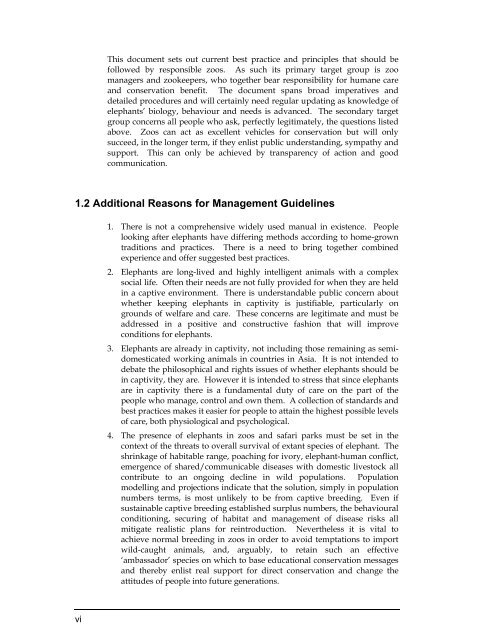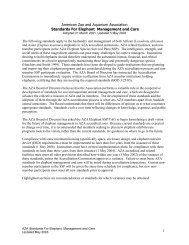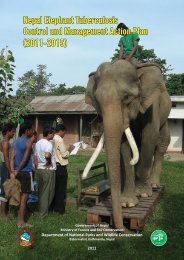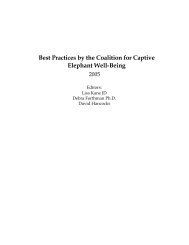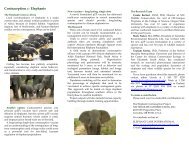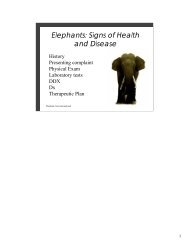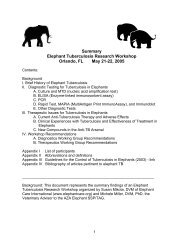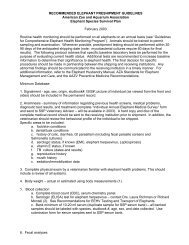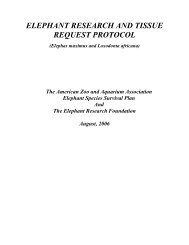Elephants Elephants - Wildpro - Twycross Zoo
Elephants Elephants - Wildpro - Twycross Zoo
Elephants Elephants - Wildpro - Twycross Zoo
- No tags were found...
Create successful ePaper yourself
Turn your PDF publications into a flip-book with our unique Google optimized e-Paper software.
This document sets out current best practice and principles that should befollowed by responsible zoos. As such its primary target group is zoomanagers and zookeepers, who together bear responsibility for humane careand conservation benefit. The document spans broad imperatives anddetailed procedures and will certainly need regular updating as knowledge ofelephants’ biology, behaviour and needs is advanced. The secondary targetgroup concerns all people who ask, perfectly legitimately, the questions listedabove. <strong>Zoo</strong>s can act as excellent vehicles for conservation but will onlysucceed, in the longer term, if they enlist public understanding, sympathy andsupport. This can only be achieved by transparency of action and goodcommunication.1.2 Additional Reasons for Management Guidelines1. There is not a comprehensive widely used manual in existence. Peoplelooking after elephants have differing methods according to home-growntraditions and practices. There is a need to bring together combinedexperience and offer suggested best practices.2. <strong>Elephants</strong> are long-lived and highly intelligent animals with a complexsocial life. Often their needs are not fully provided for when they are heldin a captive environment. There is understandable public concern aboutwhether keeping elephants in captivity is justifiable, particularly ongrounds of welfare and care. These concerns are legitimate and must beaddressed in a positive and constructive fashion that will improveconditions for elephants.3. <strong>Elephants</strong> are already in captivity, not including those remaining as semidomesticatedworking animals in countries in Asia. It is not intended todebate the philosophical and rights issues of whether elephants should bein captivity, they are. However it is intended to stress that since elephantsare in captivity there is a fundamental duty of care on the part of thepeople who manage, control and own them. A collection of standards andbest practices makes it easier for people to attain the highest possible levelsof care, both physiological and psychological.4. The presence of elephants in zoos and safari parks must be set in thecontext of the threats to overall survival of extant species of elephant. Theshrinkage of habitable range, poaching for ivory, elephant-human conflict,emergence of shared/communicable diseases with domestic livestock allcontribute to an ongoing decline in wild populations. Populationmodelling and projections indicate that the solution, simply in populationnumbers terms, is most unlikely to be from captive breeding. Even ifsustainable captive breeding established surplus numbers, the behaviouralconditioning, securing of habitat and management of disease risks allmitigate realistic plans for reintroduction. Nevertheless it is vital toachieve normal breeding in zoos in order to avoid temptations to importwild-caught animals, and, arguably, to retain such an effective‘ambassador’ species on which to base educational conservation messagesand thereby enlist real support for direct conservation and change theattitudes of people into future generations.vi


